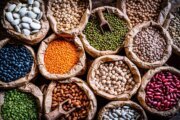SRINAGAR, India (AP) — The final phase of voting to choose a local government in Indian-controlled Kashmir wrapped up Tuesday, the first such vote since Indian Prime Minister Narendra Modi’s government stripped the disputed region of its special status five years ago.
Over 3.9 million residents were eligible to cast ballots to choose 40 lawmakers out of 415 candidates in the region’s seven districts during the third — and last — phase of the election.
It’s the first such vote in a decade and the first since Modi’s Hindu nationalist government scrapped the Muslim-majority region’s semi-autonomy in 2019.
Thousands of armed government forces patrolled the voting districts and guarded over 5,000 polling stations. Lines of voters stretched across the stations. The region’s chief electoral office said about 69% turnout was recorded on Tuesday.
India’s unprecedented move in 2019 downgraded and divided the former state into two centrally governed union territories, Ladakh and Jammu-Kashmir. Both are ruled directly by New Delhi through its appointed administrators along with unelected bureaucrats. The move — which largely resonated in India and among Modi supporters — was mostly opposed in Kashmir as an assault on its identity and autonomy.
The region has since been on edge with civil liberties curbed and media gagged.
India and Pakistan each administer a part of Kashmir, but both claim the territory in its entirety. The nuclear-armed rivals have fought two of their three wars over the territory since they gained independence from British colonial rule in 1947.
In Jammu areas, tens of thousands of Pakistani Hindu refugees are voting for the first time in any regional election since their migration in 1947. The refugees, officially called West Pakistan Refugees, have long been recognized as Indian citizens with voting rights in national elections. However, before the 2019 changes, Kashmir’s special status allowed only descendants from residents of the territory in 1934 to vote and own property.
At a polling station in Jammu’s R S Pura area, scores of these refugees lined up to cast their votes.
“It’s a Diwali for us,” said the first-time voter Vikram Choudhary, 26, comparing the vote to the Hindu festival of light symbolizing the victory of light over darkness. “We feel liberated.”
“Our children will have a secure future and a say in local affairs now,” said another voter, 76-year-old Satpal Choudhary.
India’s ruling BJP has a strong political base in the region’s Hindu-dominated areas of Jammu that largely favor the 2019 changes and has won multiple seats from there in the past elections. But it is weak in the Kashmir Valley where the BJP has never won a seat. The party has fielded only 19 candidates for the 47 seats in the valley while it is contesting all 43 seats in Jammu.
Modi’s party is not officially aligned with any local group, but many politicians believe it is tacitly supporting some parties and independent candidates in the valley who privately agree with it. The region’s main pro-India political parties say the BJP is trying to manipulate the election and fragment the valley’s vote through independents.
About 43% of 503 candidates contesting the vote in the Kashmir Valley are independents, compared to 35% of 359 candidates in Jammu.
As in the previous phases of the elections, many voters in the valley said people were frustrated over the absence of their own representatives for so many years. The ballot was the only means for them to express anger at India’s actions in the region, they said.
“Truth is that it’s the central government has been the real ruler here even before 2019,” said Syed Altaf after casting his vote in the Kashmir Valley’s Pattan area.
Voting began Sept. 18 with about 61% turnout. In the second phase of voting on last Wednesday, overall turnout was about 55%. There were no incidents reported in either phase.
Authorities said the region’s overall turnout was 63% in the three phases. Votes will be counted next Tuesday, with results expected later that day.
The multistage election will allow Kashmir to have its own truncated government and a local legislature, called an assembly, rather than being directly under New Delhi’s rule.
However, there will be a limited transition of power from New Delhi to the 90-seat assembly as Kashmir will remain a “union territory” — directly controlled by the federal government — with India’s Parliament as its main legislator. Kashmir’s statehood must be restored for the new government to have powers similar to other states of India.
Militants in the Indian-controlled portion of Kashmir have been fighting New Delhi’s rule since 1989. Many Muslim Kashmiris support the rebels’ goal of uniting the territory, either under Pakistani rule or as an independent country.
India insists the Kashmir militancy is Pakistan-sponsored terrorism. Pakistan denies the charge, and many Kashmiris consider it a legitimate freedom struggle. Tens of thousands of civilians, rebels and government forces have been killed in the conflict.
___
Associated Press journalist Channi Anand contributed to this story from Jammu, India.
___
Follow AP’s Asia-Pacific coverage at https://apnews.com/hub/asia-pacific
Copyright © 2024 The Associated Press. All rights reserved. This material may not be published, broadcast, written or redistributed.





